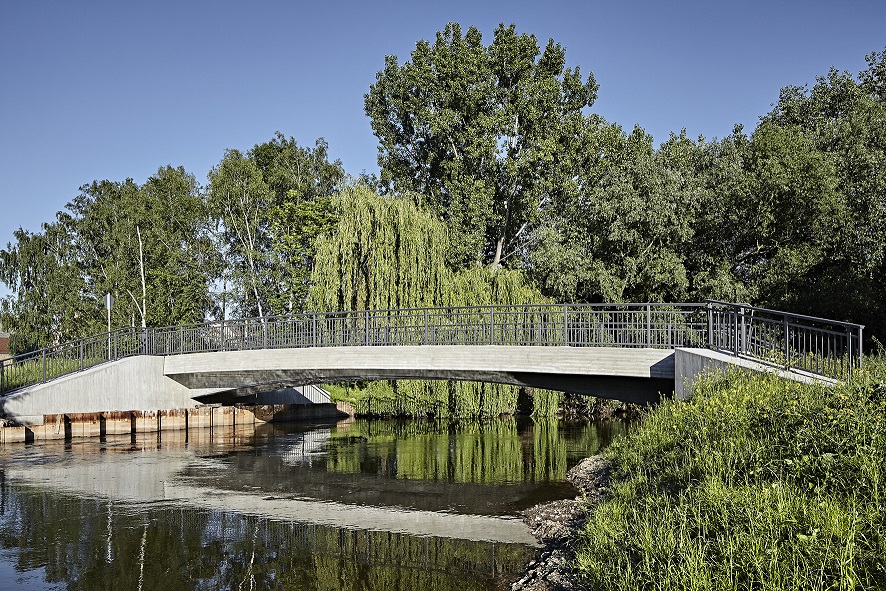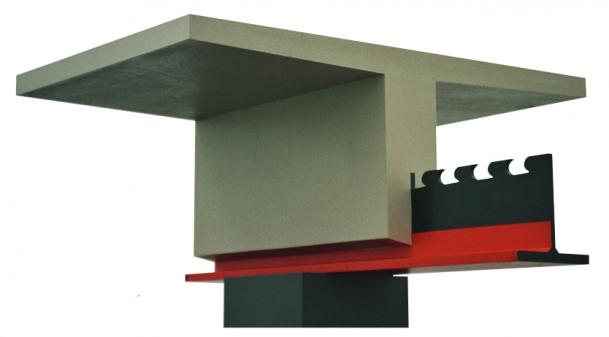Steel paves the way to a nature reserve in Germany
In Osendorf (Germany), ArcelorMittal Europe – Long Products contributed to the construction of a composite bridge built with our Prefabricated Composite Beams (PreCoBeams), ensuring an external reinforcement for the concrete bridge. It is the first hot-dip galvanised composite dowel construction in Germany.

© florian schreiber / fotografie
PreCoBeams: a competitive and sustainable solution
Due to the flood risk in the area, the new bridge required to be built without a pillar, as a single-span frame with a length of 21 metres.
PreCoBeams were an adequate solution to this requirement. It is a relatively new bridge construction method which involves heavy beams that are oxycut longitudinally in two T-sections with a specific geometry.
On the one hand, it creates the special bond with the concrete and thus substitutes the welded shear studs in standard solutions, and on the other hand, it improves the beam's fatigue performance.
This economic bridge solution has many advantages:
- high degree of prefabrication, reducing installation time
- reduction of coating surface
- no need for studs or welding
- very sustainable lifecycle and lower maintenance costs due to lifetime corrosion protection
- high safety standard in case of vehicle (trucks) impact
All the steel used for the bridge was produced by ArcelorMittal Europe – Long Products’ mill in Differdange (Luxembourg). To create the PreCoBeams, 7 tonnes of 20-metre HD320x300 profiles in the grade S355ML were cut by our Beam Finishing Center Eurostructures. This was a great advantage for ArcelorMittal, as we were able not only to sell the HAV products, but also to take care of the finishing thanks to the experience of Eurostructures.
One year from start to finish
The new bridge is located in Osendorf and transfers a rural road across the Elster river to a nature reserve. The bridge is 21 metres long, 4.5 metres wide with a road width of 3.50 metres. It is actually a replacement solution for the Elsterbrücke bridge as the three-span structure, built in 1950, couldn’t be reconstructed due to flood damage.
Overall, it only took one year to create and build this new solution from the first meeting in April 2016 to the opening of the bridge in the spring of 2017.














